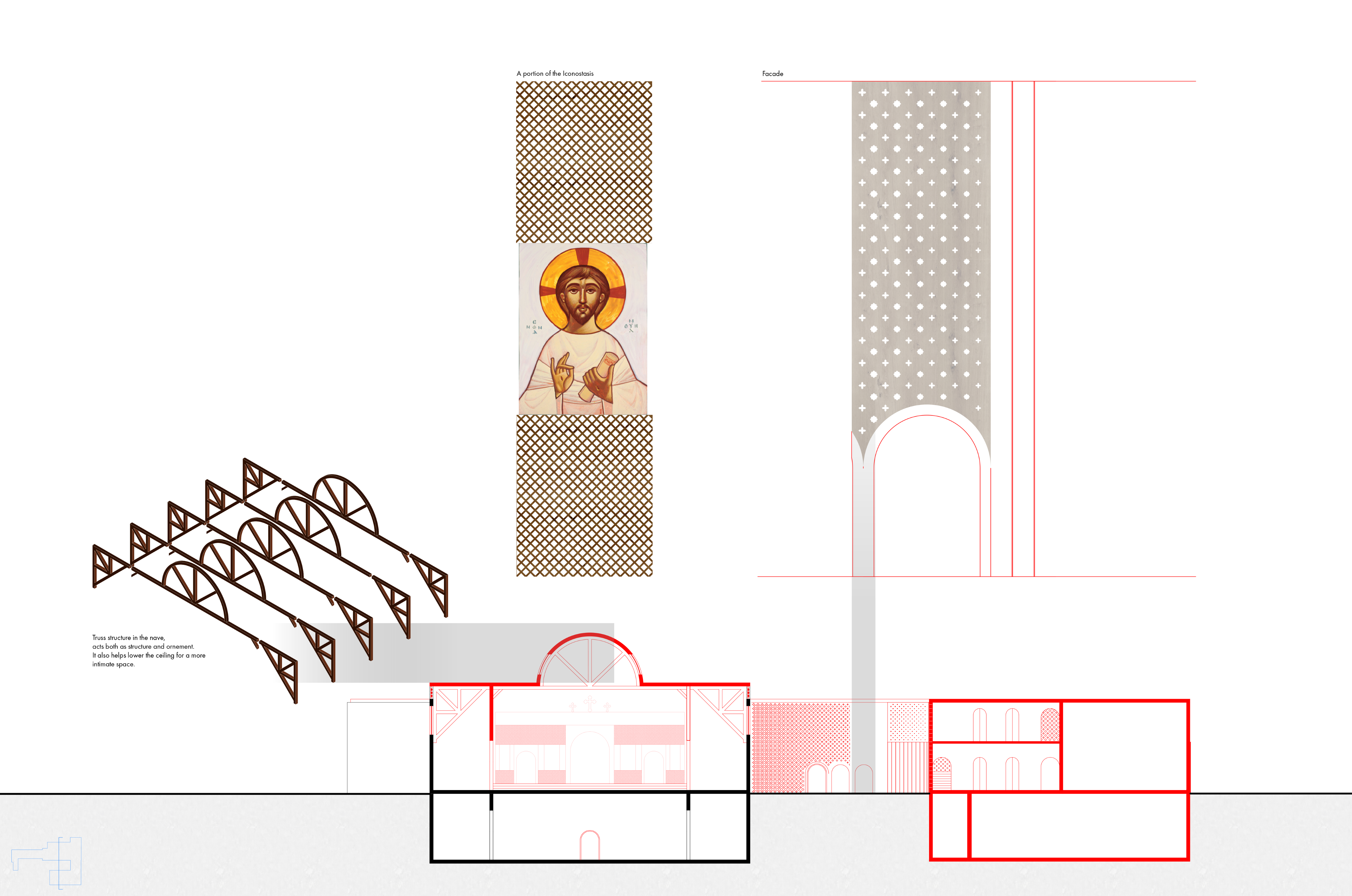In the 1960s, there was an immigration influx of Egyptian Coptic Christians (Copts) to Europe and to the west; Copts adapted their worship to the available conditions of these new locations. Coptic spaces in Egypt are atmospheric with a distinct identity, but diasporic Coptic churches became more flexible, reflecting the diasporic mindset of surviving. As a result, Coptic churches in North America lack a ritualistic and liturgical atmosphere found in Egypt, often appropriating buildings of other denominations of Christianity, or even light industrial spaces. My thesis argues that instead of building out of necessity – as the diasporic Coptic community has had to do in the past – we can now start thinking of intentional design aspects that merge both diasporic landscapes and traditional Coptic design elements. My thesis identifies three key concerns for the design of a new North American Coptic church: 1) religious adaptation; 2) industrial adaptation; and 3) having the churches be purpose-built for ritual and prayer rather than mere aesthetic.



